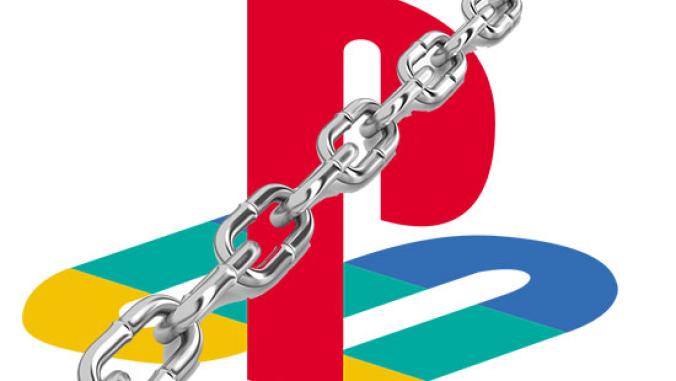Product takeback and e-waste recycling: A growing business opportunity
<p>Results of a new study on sustainable supply-chain management in the IT sector</p>

This is the first of a four-part series covering the state of sustainable supply-chain management in the IT sector.
As global economic trends increase natural resource costs, complicate production networks, and concentrate specialized manufacturing in geographic hubs, supply chains are becoming increasingly exposed to the risk of business disruption. As stakeholders continue to raise corporate attention to issues of environmental sustainability and social responsibility, sustainable supply chain management (SSCM) strategies are becoming recognized as an effective way to address stakeholder sustainability concerns while mitigating the risk of business disruption and creating business value.
Debate over the business case for supply chain sustainability is dominated by a variety of diverging perspectives, ranging from “there absolutely is value” to “there absolutely is no value.” Malk Sustainability Partners’ study, Sustainable Supply Chain Management in Information Technology (PDF) investigated this issue as it pertains to the IT sector by interviewing supply chain and sustainability managers at top IT manufacturers and service providers as well as industry experts. The aggregated interview data conveyed, somewhat unsurprisingly, that the business value of a sustainable supply chain strategy depends on companies’ operational focus, position in the value chain, exposure to compliance risk, and business models.
Malk Sustainability Partners (MSP) engaged 29 global information technology (IT) companies and five industry experts to investigate the key drivers, important issues, and popular strategies behind this sector’s adoption of SSCM. Corporate respondents included hardware manufacturers like Hewlett Packard, Dell, Sony, Motorola, and Ericsson; component manufacturers like Intel, ST Microelectronics, SanDisk, Advanced Micro Devices, and Applied Materials; enterprise buyers of electronic equipment like eBay; and other companies like Cisco Systems, IBM, and Oracle.
The results of MSP’s research revealed:
- Companies’ perspectives of the business value of SSCM strategies vary depending on their operational focus, position in the value chain, and exposure to compliance risk.
- The four primary drivers of SSCM are stakeholder pressure, regulatory pressure and compliance, risk and cost management, and corporate leadership.
- SSCM currently focuses more heavily on social issues than environmental ones; with the most prominent social issues pertaining to conflict mineral compliance and fair labor hours.
- SSCM efforts to engage suppliers vary by degree of depth. Respondents indicated this variation ranges from self-assessment questionnaires (limited depth) and second or third-party audits (intermediate depth) to collaboration through industry coalitions (most in depth).
A significant majority, nearly 70 percent, of respondents indicated company-wide supply chain sustainability policies add value by mitigating risk and enhancing supply chain resiliency. Still, a meaningful minority of participants indicated otherwise and, in some cases, remains skeptical about the true value of these initiatives. For some, SSCM initiatives seem like obligatory investments needed to "check the box" of customer compliance. Careful review of the interview anecdotes was necessary to determine which circumstances make the value of an SSCM strategy outweigh the associated costs.
One topic that yielded particularly interesting anecdotes pertained to e-waste regulation. Governed at the state level in the U.S., the regulatory framework mandating e-waste recycling has evolved into a regulatory patchwork. Currently, more than 25 states have regulations that mandate consumer-electronics brands to recycle e-waste. States’ recycling quotas are typically determined by a weighted average of brands’ market shares. As these quotas differ by state and brand market share per state changes over time, the compliance challenge posed by this regulatory patchwork is significant. Many interview respondents cited difficulties in coordinating their companies’ programs to meet this challenge.
Other respondents leveraged such regulations to their advantage. Cisco, one of our survey respondents, discussed its e-waste management program and how they were able to lower input costs for their products. Cisco’s innovative waste management efforts led to the company sending less than one percent of its collected solid waste to landfills; with the remaining portion of collected e-waste being reused, recycled, or refurbished! Through this expanded scope, Cisco reaps benefits from minimized input costs due to increased resource efficiency and enhanced control over the security of clients’ information.
Value-added distributors’ expansion into the electronics hardware space reveals e-waste recycling can be profitable if scaled. Brightstar, the world’s largest specialized wireless distributor and a leading global services company that serves mobile device manufacturers, wireless operators, and retailers, has committed to creating a global handset take-back program and reverse supply chain. At the 2012 World Economic Forum - East Asia, Brightstar CEO Marcelo Claure explained post-consumer used phones are sold in the U.S. at heavily discounted prices. This environment has enabled Brightstar to purchase large quantities of used phones and refurbish them for resale in developing nations. Brightstar currently sells 25 to 30 million like-new phones per year.
Consumer electronics brands have already recognized the potential value from a Brightstar partnership. Brightstar’s customer base includes retailers, such as Wal-Mart, Best Buy, and Verizon, as well as the largest electronics brands, like Apple, Samsung, Motorola, Dell, and LG. As Brightstar’s efforts garner more attention and the regulatory patchwork mandating e-waste recycling proliferates across U.S. states, it is likely companies will continue to turn to Brightstar and its peers to solve their sustainability compliance risk.
Image by charobnica via Shutterstock.




